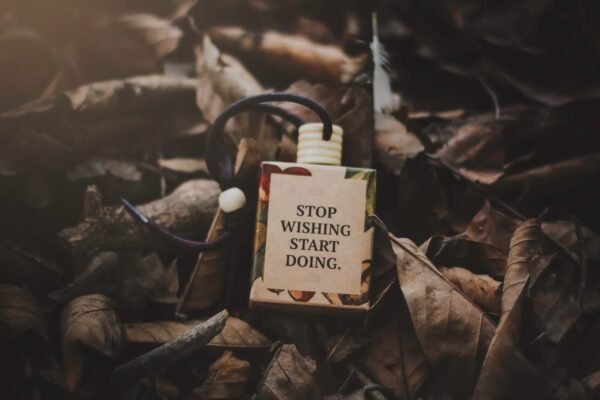Land Interviews Even If You’ve Never Had a Job Before
Your First Resume Isn’t a Barrier—It’s an Opportunity
Creating a resume with no work experience can feel like standing at the edge of a cliff, staring into a job market that wants “2+ years of experience” for entry-level roles. It’s intimidating. It’s frustrating. And it’s common.
But here’s the truth: everyone starts somewhere.
In 2025, employers are shifting away from rigid job requirements. They’re looking for potential, not just experience. That means you don’t need a polished corporate history to craft a compelling resume—you just need to tell your story right.
Whether you’re a student, recent graduate, or someone making a career pivot, this guide will walk you through how to build a powerful resume from scratch, highlight your strengths, and actually land interviews.
Let’s turn “no experience” into no problem.
Step 1: Understand What a Resume Is Really For
Before you start writing, let’s clarify what a resume actually does.
A resume isn’t just a list of jobs—it’s a marketing tool. It’s your personal pitch. A one-page snapshot that tells an employer:
“Here’s why I’m a great fit, even if I’ve never had this job before.”
In 2025, with AI screening tools, resume bots, and human recruiters juggling dozens of applicants, clarity, relevance, and personality matter more than ever.
Your goal? Craft a document that makes the reader think:
“I’d like to talk to this person.”
Step 2: Choose the Right Resume Format for No Experience
Not all resumes are created equal. If you’re applying without traditional job experience, avoid a chronological format that highlights work history. Instead, use a functional or hybrid resume.
🔹 Functional Resume:
- Focuses on skills and achievements rather than job history
- Great for students, career changers, or fresh grads
🔹 Hybrid Resume (Recommended):
- Blends skills with some relevant projects, internships, or volunteering
- Looks modern and familiar to recruiters
- Easier to pass Applicant Tracking Systems (ATS)
✅ Use a clean, professional layout
Avoid flashy graphics or over-designed templates. Stick to ATS-friendly formats with clear sections, standard fonts (like Arial, Calibri, or Georgia), and plenty of white space.
Tools to use:
- Canva Resume Builder
- Novoresume
- Zety
- Google Docs or Microsoft Word templates
Step 3: Write a Killer Resume Summary (Yes, Even Without Experience)
Most people skip the summary when they have no experience. That’s a mistake.
The summary (or objective statement) is your first and best chance to show personality, intent, and value.
✍ Example (Student):
Enthusiastic and detail-oriented business student with strong communication skills, a passion for data analytics, and hands-on project experience. Seeking to bring problem-solving mindset and adaptability to a dynamic team environment.
✍ Example (Career switcher):
Motivated career-changer with a background in education and a growing skill set in digital marketing. Known for creativity, initiative, and dedication to continuous learning.
💡 Pro Tip:
Customize your summary for each job. Use keywords from the job posting to show alignment.
Step 4: Highlight Skills That Transfer
Don’t underestimate your skills just because they weren’t gained at a job.
Ask yourself:
- What tools do I know?
- What have I done at school, in clubs, or at home?
- Have I ever organized something, solved a problem, or led a group?
Use a “Skills” section near the top of your resume.
🔧 Examples of In-Demand Skills in 2025:
- Communication (written & verbal)
- Digital literacy (Google Workspace, Microsoft 365)
- Time management
- Teamwork & collaboration
- Basic project management
- Social media (content creation, scheduling)
- Canva, Notion, Figma, Trello
- Basic coding (HTML/CSS, Python)
- Data entry & spreadsheets
- Customer service mindset
🎯 Match your skills to what the job description asks for. That’s how you pass both ATS filters and impress recruiters.
Step 5: Fill the Experience Gap with Projects, Volunteering & Leadership
Here’s the truth: Experience is more than just jobs.
If you’ve ever:
- Organized a school event
- Volunteered at a community center
- Built a website for a friend
- Managed a club or team
- Created a TikTok campaign for a cause
…that counts.
📁 Use a section called “Relevant Experience,” “Projects,” or “Leadership & Activities.”
🔹 Example 1 – Student Club
President, Campus Green Club
University of XYZ — Jan 2023 to Present
- Led a 12-member team in organizing three university-wide sustainability events
- Increased event attendance by 40% through Instagram campaigns
- Managed club budget of $2,000 and filed reports with student council
🔹 Example 2 – Personal Project
Creator, Personal Finance Blog
Self-initiated — 2024
- Wrote and published 15+ articles teaching young adults how to budget
- Built site using WordPress and SEO best practices
- Reached 3,000+ monthly visitors organically
These kinds of entries tell recruiters: “I take initiative, I follow through, and I make things happen.”
Step 6: Showcase Your Education Strategically
For a no-experience resume, your Education section is one of your strongest assets. Make it shine.
Include:
- Degree or diploma title
- Institution & graduation date
- GPA (if 3.5 or above)
- Relevant coursework
- Scholarships, honors, or dean’s list
- Clubs, competitions, or leadership roles
🔹 Example:
Bachelor of Arts in Psychology
University of XYZ – Expected Graduation: May 2025
- GPA: 3.7
- Relevant Coursework: Research Methods, Cognitive Science, Statistics
- Awards: Academic Excellence Scholarship (2023–2025)
- Member, Psi Chi Honor Society
Don’t just list your school. Prove that you were engaged.
Step 7: Add Certifications That Impress in 2025
Certifications show initiative—and in 2025, many employers love to see micro-credentials.
If you’ve taken a reputable online course or completed a free certification, list it!
📜 Great Free or Low-Cost Certifications:
- Google Career Certificates (Coursera) – IT, Data, UX, Marketing
- HubSpot Academy – Digital marketing, CRM, SEO
- LinkedIn Learning – Business, Excel, productivity tools
- Meta Blueprint – Social media advertising
- AWS Cloud Practitioner – Cloud basics
Example:
Google Data Analytics Professional Certificate
Coursera – Completed March 2025
Step 8: Optional but Powerful: Add a “Passions” or “Interests” Section
This isn’t mandatory, but in a world full of generic resumes, a glimpse of personality can help you stand out.
Include hobbies that show:
- Curiosity
- Creativity
- Leadership
- Technical interests
✍ Example:
Interests:
Personal finance podcasts · Building Notion templates · UI/UX design · Chess · Photography walks · Learning Spanish
This can spark conversation and make your resume memorable.
Step 9: Proofread Like Your Job Depends on It (Because It Does)
You’d be surprised how many resumes get rejected due to spelling or grammar mistakes.
✅ Tips:
- Use tools like Grammarly or Hemingway Editor
- Read it out loud—awkward phrases stand out this way
- Ask a friend or mentor to review it
Also, save it as a PDF to keep formatting intact when emailing or uploading.
Step 10: Bonus – Tailor It Every Time You Apply
Yes, it takes a little more effort—but it pays off.
Customize your resume for each job by:
- Adjusting your summary with keywords from the job post
- Reordering skills based on what the role needs
- Emphasizing relevant projects or coursework
💡 One-size-fits-all resumes are easy to spot—and easy to ignore.
Final Touch: Write a Simple, Confident Cover Letter
While not always required, a brief, thoughtful cover letter can:
- Show that you care
- Explain your lack of experience without apologizing for it
- Add personality to your application
🔍 Basic Structure:
- Greet the hiring manager by name (if possible)
- Say why you’re excited about this role at this company
- Show how your skills or projects relate to their needs
- Close with enthusiasm and confidence
✅ Keep it under 300 words. Make it real. Make it yours.
Final Thoughts: Your First Resume is Just the Beginning
No experience? No problem.
Your resume in 2025 doesn’t need to list five internships or years of work to get noticed. It needs to show that you’re capable, curious, and committed to growth.
Focus on your strengths. Lead with what you’ve learned. Use projects, courses, and passions to fill the gaps. Keep learning. Keep improving. And don’t let imposter syndrome write your story.
Remember: Everyone started where you are now.
And your journey? It starts with a single page—done right.





